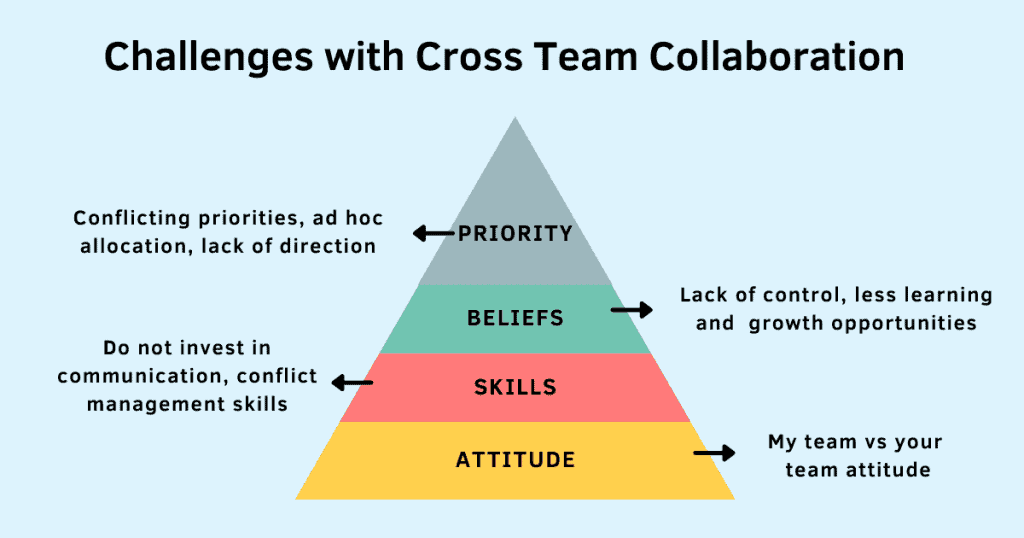Utilizing a cross-functional team is a common trend in many businesses today to solve issues related to disruptions.
A survey from Garner revealed that 53% of companies use a cross-functional team to determine cost optimization opportunities across the enterprise. It is also reported about 83% of digitally maturing companies promote cross-functional teams.
But it leads to another challenging problem, cross-functional team leadership. So what are the skills and abilities that a leader needs now to effectively manage cross-function teams? Whether it is the HRers who are looking for a talented candidate to fulfill the open role of cross-functional leader or an individual who is aiming to improve leadership skills, this article is written for you. Let's dive in!
Table of Contents
- Why Cross-functional Teams Are Important?
- What is Cross-functional Team Leadership?
- 10+ Must-have Cross-functional Team Leadership Abilities
- Key Takeaways
- Frequently Asked Questions

Get your Employee Engaged
Start meaningful discussion, get useful feedback and educate your employee. Sign up to take free AhaSlides template
🚀 Grab Free Quiz☁️
Why Cross-functional Teams Are Important?
The significant shift from a hierarchal structure to a cross-functional team is an unavoidable process that will help many businesses sustain their thrives in the competitive landscape. With the following benefits, there is no doubt that cross-functional teams are a promising solution that guarantees that companies will respond quickly and effectively to changes in the market.
- Innovation: They bring together diverse perspectives and expertise, which can lead to innovative solutions.
- Efficiency: These teams can work on multiple aspects of a project simultaneously, reducing the time to market.
- Customer Focus: By bringing together people from different functions, these teams can better understand and meet customer needs.
- Learning and Growth: Team members can learn from each other, leading to personal and professional growth.
- Flexibility: Cross-functional teams can adapt quickly to changes, making the organization more agile.
- Problem Solving: They can tackle complex problems that require a multi-disciplinary approach.
- Breaking Down Silos: These teams can help break down barriers between departments, improving communication and collaboration.

What is Cross-functional Team Leadership?
As mentioned above, organizations should pay attention to cross-functional team leadership. Managing a cross-functional team can be daunting. Leadership in a group of people who come from several different departments requires more skill sets and abilities. If cross-functional team leaders aren’t careful, they can unintentionally burn out their team members or end up as the last priority.

10+ Must-have Cross-functional Team Leadership Abilities
What matters most for cross-functional team leadership and management? Leadership is not about a single skill, a good leader possesses a range of knowledge, skills, and abilities. Here are the most important skills and capabilities to manage this type of team effectively.

1. Excellent Communication
One of the most significant parts of cross-functional team leadership is communication. This is the ability to clearly convey information and expectations, listen effectively, and foster open dialogue. The goal is to establish mutual understanding, which is crucial for individuals from different departments working towards the same end.
2. Conflict Resolution
Conflicts, disputes, or disagreements happen more in cross-functional teams. Leaders need to be able to identify the root cause of conflicts and find a resolution that satisfies all parties involved as quickly as possible because conflicts have negative impacts on project management.
3. Problem-Solving
Cross-functional team leadership cannot lack the ability to think critically, analyze situations from different perspectives, and make informed decisions. Unexpected issues or new opportunities often come up, and the leader will need to act fast. It includes using the right tactics and person to address the problem.
4. Team Connection
Within the same organization, it is even harder for people from existing departments to connect with others coming from other departments. Without familiarity, they may lack trust, which makes team collaboration difficult. Thus a leader of cross-functional teams should create an environment where everyone feels valued and included, which can lead to increased productivity and morale.
5. Empowerment
Autonomy has been the trend of team management in recent years. Cross-functional team leadership is required to promote an environment where team members feel valued and capable. This involves providing opportunities for growth, giving constructive feedback, and fostering a sense of ownership
6. Organizational Skills
Well-organized teams often work before the deadline because plans and tasks are handled and assigned effectively, maximizing productivity and resource allocation. Great cross-functional team leadership often includes setting priorities, managing time and resources, and coordinating efforts among team members.
7. Strategic Thinking
Effective leaders are strategic thinkers. They can anticipate future trends and challenges, and they develop plans to address them. They understand the bigger picture and align their team’s efforts with the organization’s goals. Success teams need more innovations, and a leader with strategic thinking can challenge conventional thinking.
8. Cultural Competence
Globalization runs fast, the teams now are not limited by borders, and many big companies facilitate networked teams with members coming from different backgrounds and cultures. You might have team members come from India, America, Vietnam, Germany, and more. This is why many companies expect leader with cultural competence who understand and respect different cultures and are aware of their own biases.
9. Emotional Intelligence
This skill set is needed more than technical and hard skills. Emotions directly affect working behaviors, performance, and productivity. It is not only about the ability to recognize and manage their own emotions but also those of their team members. Leaders with high emotional intelligence are often better at motivating and understanding their team members.
10. Judgment and Decision Making
Last but not least, decision-making is the core of cross-functional team leadership because leaders are often required to make tough decisions. It includes decisive and unbiased judgment and decisions based on knowledge, experience, and rational thinking. It’s about making the right call even when the situation is complex or uncertain.
Key Takeaways
💡How to improve cross-functional team leadership? Join the 12K+ well-known organizations that are using AhaSlides to bring effectiveness and engagement to their Leadership and Corporate training. Learn more about using interactive presentation tools like AhaSlides to improve team collaboration and performance.
Frequently Asked Questions
What is an example of a leading cross-functional team?
Cisco, a technology company, transformed its organizational structure from a command and control system to a collaborative and organic work environment. Their HR strategy embraces lower-level manager input in top-level decision-making, nurturing a collaborative culture.
What are the roles of a cross-functional team?
Most companies set up a cross-functional team for a single project, where multiple organizations or departments collaborate to achieve the same goals within an assigned timeframe.
Why is leading a cross-functional team challenging?
Unfamiliarity, miscommunication, and unwillingness to adapt to a new environment are some common issues that cross-functional teams are facing nowadays. When the team has many people refuse to listen or corporate with new co-workers and new leaders, it makes leadership in this kind of situation more daunting.
Ref: Testgorilla | HBR | HBS








